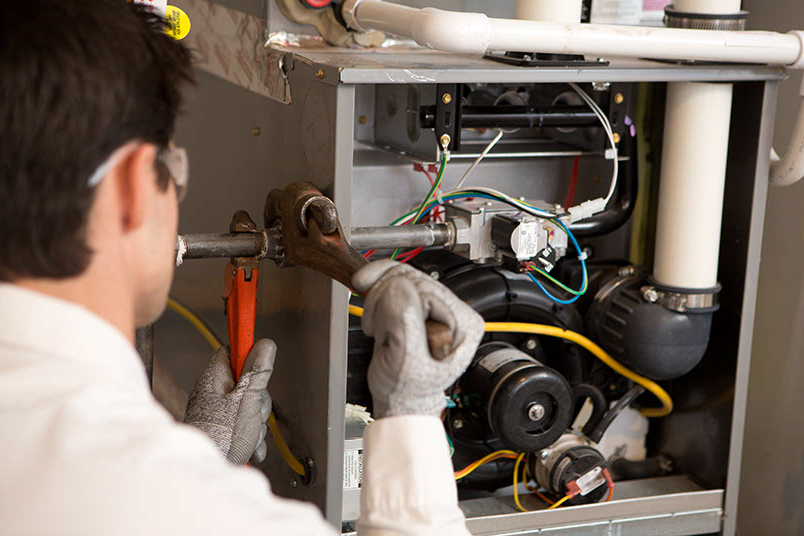
A furnace provides heat to the whole home through ducts. Furnace life depends on multiple factors like the manufacturing company, its services, and usage. It is one of the costly items placed in homes. That’s why most of the homeowners ask about its life. Some key considerations can enhance the life of the furnace. You also must take care of its servicing and rustproofing.
- How Long Does a Furnace Last? — A Complete Guide for You:
How long does a furnace last? It is the most asked question by homeowners while buying a new furnace. It is a major investment in home appliances.
It is difficult to estimate the life of a furnace. It is the most beneficial investment to keep your home warm. So, mostly people are worried about their lives.
According to the American Standard report, A furnace can last for 15 to 20 years. |
- Factors Affecting the Average Life of a Furnace:
Have you ever wondered what makes a furnace go bad? What are the factors affecting your furnace? If not, no worries, grab your seat and get the complete guide from here.
Here are some factors affecting the average life of your furnace:
- Make & Model of the Furnace:
The make and model of your furnace have a great impact on the life of the furnace. If the furnace is built on new technologies and it is a latest model, it will have a longer lifespan and good heating power. But the old models also consume more energy and have a shorter life span.
- Moisture Levels in Your Area:
Moisture is one of the biggest causes to shorten the lifespan of your furnace. It causes rust in your furnace, which also affects its performance and lifespan. Rust can cause the premature breakdown of your furnace.
- Frequency and Quality of Servicing:
To enhance the lifespan and maintain the manufacturer’s warranty, it is crucial to service your furnace every year. It provides more work efficiency to your furnace. Get the furnace cleaning services from a certified HVAC service provider.
- Proper Installation of Furnace:
Proper installation of the furnace is a crucial factor to enhance its work efficiency and lifespan. Improper installation reduces the life span of HVAC systems and reduces the equal distribution of air.
According to Energy Star reports, Almost 50% of new HVAC systems are not properly installed. That decreases the work efficiency of those systems by 30%. |
- How Do I Know When My Furnace Needs Replacing? — Some Steps to be Known
Do you know when your furnace should be replaced? What are the factors involved in getting your furnace replaced? Here we are to tell you when your furnace should be replaced. Ensure to count on these factors and replace your furnace if it needs to be.
The average life span of a furnace is 15 to 20 years. But there are some factors you need to know about your furnace replacement.
Here are those factors:
- Frequent Service Calls
- Expensive Servicing Bills
- Unequal heat distribution
- Cannot maintain a fixed thermostat temperature
- Increased noise
- Sometimes blows cold air
- Skyrocketing energy bills, but not much efficiency
- How to Extend the Life Span of Your Furnace? — Factors to Count
To enhance the life of your furnace, there are some factors to consider. These steps can enhance the life of your furnace and save you money on buying a new furnace.
Here are some factors to count:
- Regular Maintenance and Filter Replacement:
Schedule annual maintenance of your furnace by an HVAC-certified technician. To ensure proper airflow, always change your furnace filter after 6 months. It helps to enhance the functionality of the furnace. The furnace can distribute the quality air easily throughout the whole home due to a fresh air filter.
- Prompt Issue Resolution:
Always ensure to address the minor issues of your furnace instantly. These minor issues can lead to major problems in the furnace if they are not properly handled instantly. Keep the area around your furnace cleaned to provide it with proper air intake.
- Efficient Operational Systems for Furnace:
Improve the insulation system in your home to avoid extra pressure on your furnace to keep it heated. As well as using a smart thermostat to monitor the heat in your home can reduce your energy bills by enhancing the efficiency of your home furnace.
Conclusion:
To sum up, furnace life depends on multiple factors. To enhance the life of your furnace, you must care for it by servicing it once a year, changing its air filter once in 6 months, supporting it through maintaining your home insulation, and protecting it from rust. But on average, the life of a furnace falls between 15 to 20 years.
FAQs:
What is a furnace and its benefits?
The Furnace is an HVAC system used to heat the houses in winter. It uses fuel or electricity to provide heat to the whole home through ducts.
What makes a furnace go bad?
A furnace can go bad due to improper servicing, a blocked air filter, irregular home temperature, and rust.
How often should a furnace be serviced?
A furnace should be serviced at least once a year, and its air filter must be changed once in 6 months.
What is the most common furnace failure?
The most common furnace failure is the blockage of the air filter. When the air filter gets blocked, the furnace works harder to maintain the home’s inner temperature.
What can be the average life of a furnace?
The average life of a furnace can be 15 to 20 years. It depends on its model, manufacturing company, the moisture of the place where it is installed, and proper servicing.


